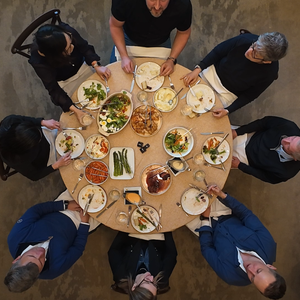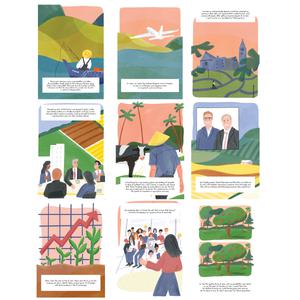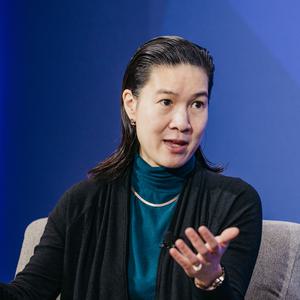Some assertions are repeated so often they become common wisdom. It is often said that the globe’s population will reach 10 billion people around 2050 and that we will need to produce more food in the next 40 years than in the last 10,000. In truth, no one knows if these data are correct. We’ll know for sure in 2050. What we do know is that to feed everyone well and sustainably, we must reimagine agriculture.
We could produce enough calories to feed 10 billion today. But not in a future roiled by climate change, when consumers will also have different expectations of their food. To meet the challenges of that future, we’ll need crops that can tolerate rising temperatures or storms and droughts, and are less dependent on pesticides and fertilizers to satisfy consumers who want to know where their food came from and how it was produced. The challenges of the future will demand a revolution in how and where crops are grown and sold.
In the last century, agricultural outputs boomed, driven by the expanded use of irrigation, chemical fertilizers, mechanized cultivation, and high-yield plant breeds. In particular, Norman Borlaug’s Green Revolution created high-yield wheat and rice varieties that transformed agriculture around the globe, saving millions from starvation. These technologies were adopted widely. To give just one example, the biotech seed market grew from 1.7m hectares in 1996 to more than 189 million hectares in 2017, when the biotech crop adoption rate in the top five biotech crop-growing countries approached saturation.
But these mature technologies are unable to protect our food system and our planet: Their impact is flattening. What’s more, their development is too expensive and slow. It costs around $125 million and takes more than 10 years to develop a single desirable biotech seed trait. In response, seed companies are forced sell the same products in as many geographies as possible to justify the high costs of developing a new product, resulting in public worries about the health effects of crops and regulatory concerns about their environmental impacts.
Everywhere, consumers are unhappy with the unsustainable, opaque industrial agricultural system that now dominates world food production. They dislike big ag’s inputs of pesticides and fertilizers and its outputs of poor quality food.









